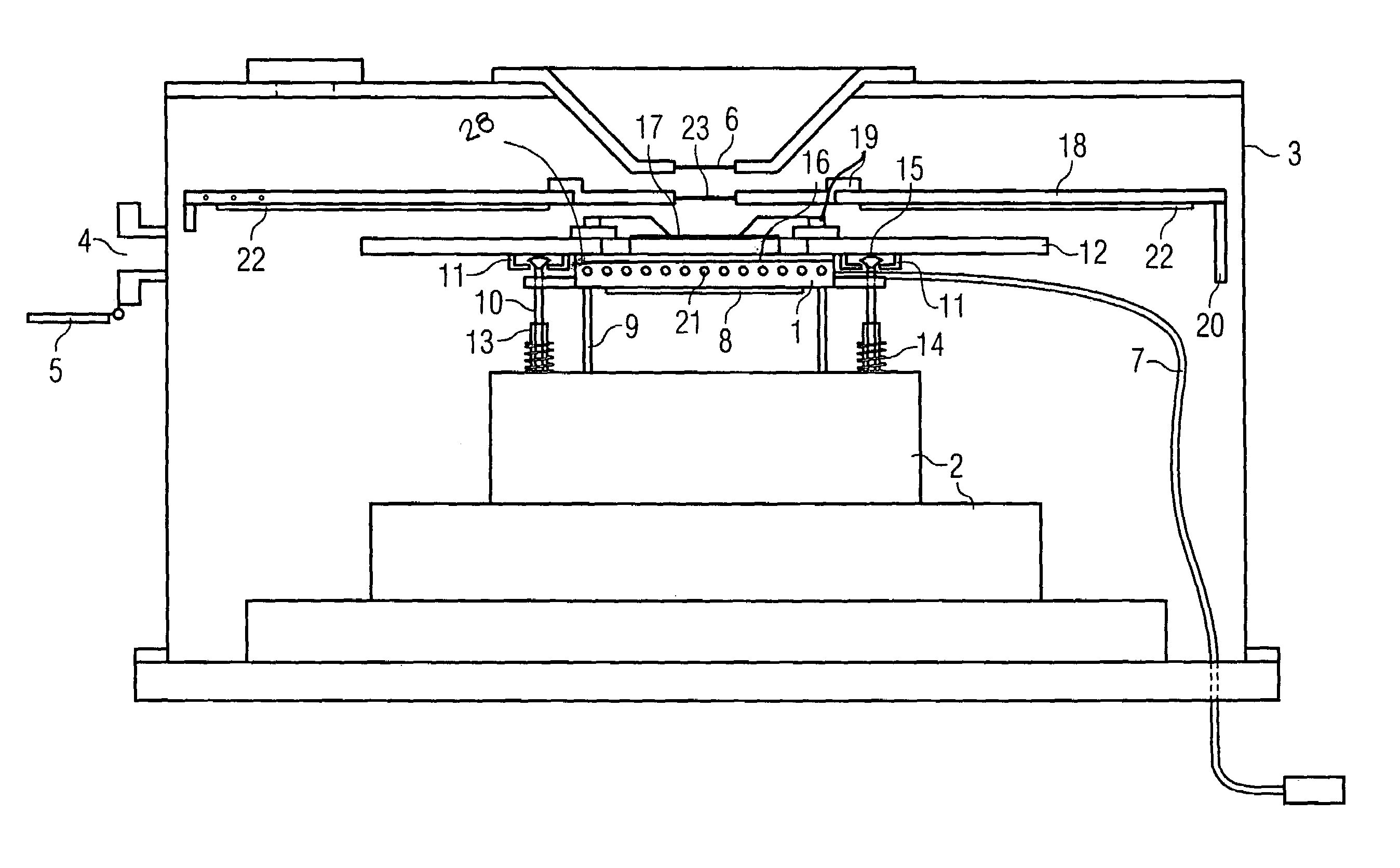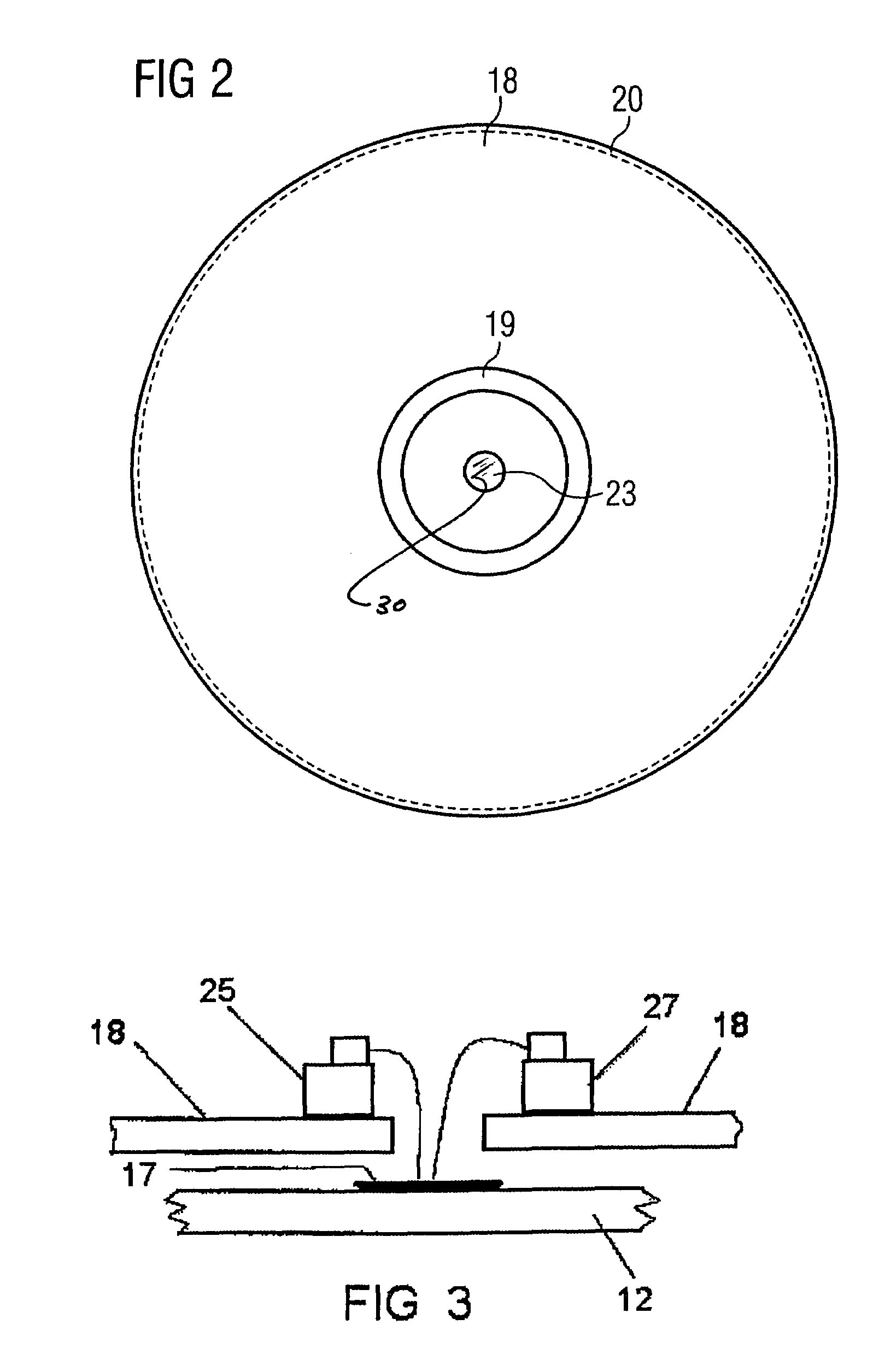Test apparatus for testing substrates at low temperatures
a technology of test apparatus and substrate, which is applied in the direction of electronic circuit testing, measurement devices, instruments, etc., can solve the problems of limiting the possible low temperature range for the testing of electronic components, affecting the accuracy of test results, and requiring a large amount of time and labor
- Summary
- Abstract
- Description
- Claims
- Application Information
AI Technical Summary
Benefits of technology
Problems solved by technology
Method used
Image
Examples
Embodiment Construction
[0034]As illustrated in FIG. 1, a test apparatus for low-temperature testing, known as a cryotest apparatus, has a chuck 1, which is connected to a chuck drive 2, preferably a motorized X-Y table. The chuck 1 can be displaced in the working area by means of the chuck drive 2. The working area is surrounded by a vacuum chamber 3, which on one side has a loading opening 4, which can be closed off in a vacuum-tight manner by a flap 5, and centrally above the working area has an inspection opening 6, which is closed off by quartz glass which reflects infrared radiation. The working area is connected to a vacuum unit for evacuating the working area.
[0035]The cylindrical chuck 1 consists of copper with a gold coating, is connected to a coolant tank via the flexible coolant line 7, and, depending on the coolant used, can be cooled to various temperature ranges as a result of the coolant being passed through passages 21 which are present in the interior of the chuck 1. The underside of the ...
PUM
 Login to View More
Login to View More Abstract
Description
Claims
Application Information
 Login to View More
Login to View More - R&D
- Intellectual Property
- Life Sciences
- Materials
- Tech Scout
- Unparalleled Data Quality
- Higher Quality Content
- 60% Fewer Hallucinations
Browse by: Latest US Patents, China's latest patents, Technical Efficacy Thesaurus, Application Domain, Technology Topic, Popular Technical Reports.
© 2025 PatSnap. All rights reserved.Legal|Privacy policy|Modern Slavery Act Transparency Statement|Sitemap|About US| Contact US: help@patsnap.com



